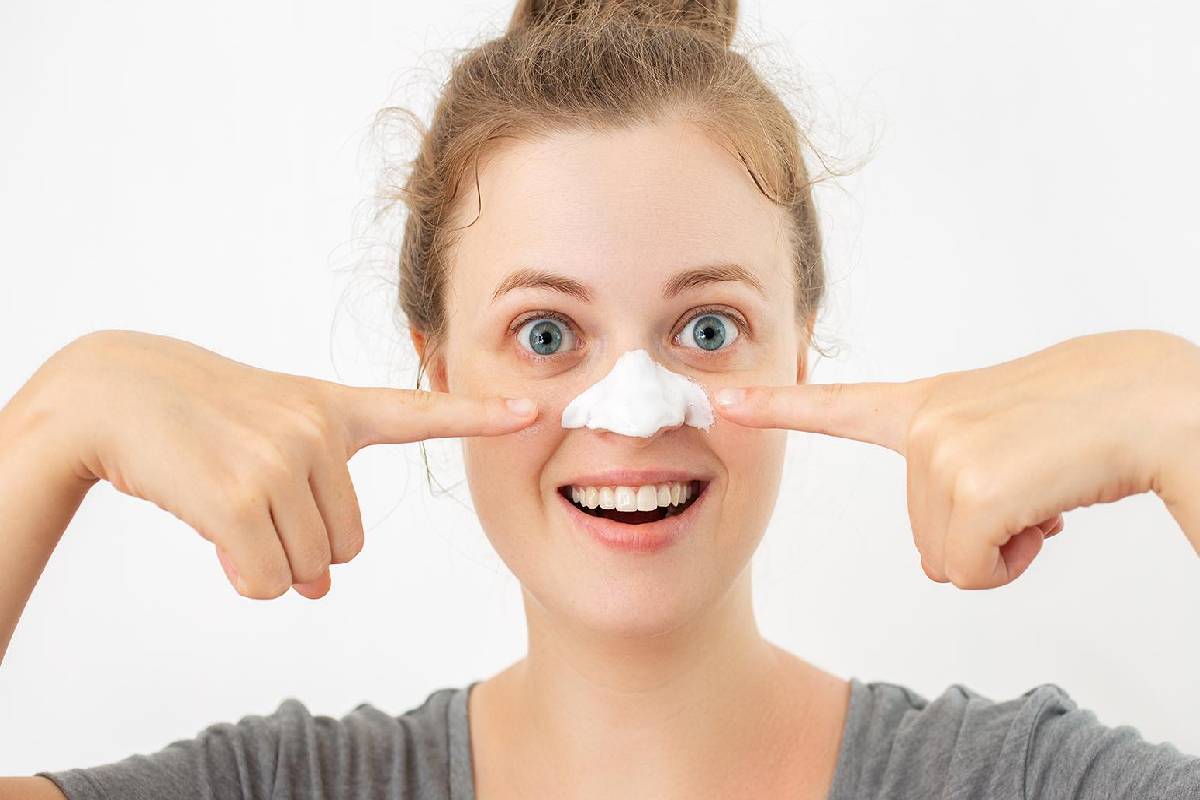Table of Contents
What do you mean by Homemade Pore Strips?
- To create your homemade pore strips, you require the same things: some adhesive or binder and something strips of fabric.
- If you have used a store-bought pore strip before you know it, it has two main components: an adhesive and various types of materials.
- If you’ve ever made a pore cleansing mask at home, then you already have a good quality idea of what kinds of ingredients might work for your adhesive: buttermilk, egg white, gelatin, or honey, to name a few.
- It can be the right choice if you want something that’s going to be sticky to go on and then dry in a few minutes.
- While the mixture you are using is wet, place a strip of thin fabric (pieces of an old t-shirt or a working sheet) over it. Then after letting it dry.
What are the Remedies for homemade pore strips?
1. Milk and Gelatin
Ingredients:
- Two teaspoons of milk
- Two teaspoons of unflavored gelatin
Preparation:
- Firstly, mix the milk with the unflavored gelatin until it forms a thick paste.
- Take it to the microwave for 10-15 seconds, so that it takes a more gelatinous consistency and that way you will have a good part of the work done.
- Finally, you will only have to apply these strips on the areas of your face most affected by blackheads.
- Let it solidify for about 10-15 minutes and then remove the bands, which will have adhered to your skin and thus take away the blackheads.
2. Aloe Vera and Gelatin
Ingredients:
- Powder gelatin (it can be the familiar flavour, but it is more convenient without flavour since it does not stick as much)
- Aloe Vera
- Mixing container (that is microwave safe)
- Utensil for mixing
- Any brush
Procedure:
- We wash our face well to leave it free of impurities.
- If we want, steam can be done with herbs or plain water, to open up the pores and thus make it easier to remove blackheads.
- We add a tablespoon of gelatin and a tablespoon of aloe vera to the container.
- And also, mix it well until it is a completely homogeneous mixture (if it is too pasty, we add a little more aloe vera).
- We place it in the microwave for 20 seconds.
- Then we apply it with a brush or brush on the problem areas.
- We let it dry.
- We carefully remove from one side to the other.
- Rinse with warm water to remove residue.
3. Powdered gelatin (it can be the typical flavour)
Ingredients:
- Lemon
- Mixing container (that is microwave safe)
- Utensil for mixing
- Brush to apply
Procedure:
- We wash our face well to leave it free of impurities.
- We can do steam with herbs or plain water, to open up the pores and thus make it easier to remove blackheads.
- Firstly, add a tablespoon of gelatin and a tablespoon of lemon to the container.
- Secondly, mix it well until it is a completely homogeneous mixture (if it is too pasty, we add a little more lemon).
- We place it in the microwave for 20 seconds.
- Then we apply it with a brush or brush on the problem areas.
- Lastly, we let it dry.
- We carefully remove from one side to the other.
- Rinse with warm water to remove residue.
4. Egg White
Ingredients:
- A tissue paper
- Egg white
- Utensil to beat
- Old brush to apply
Procedure:
- Firstly, we separate the white from the yolk and add it to the container.
- secondly, we beat with a utensil until it reaches the point of snow (which begins to foam like a foam)
- We apply with a generous brush egg white on the problem area.
- And also, put the tissue on the area where we put the egg white, pressing a little so that it sets well.
- Let it dry and remove from one side to the other carefully.
- Lastly, rinse with warm water to remove the residues that have remained.
Are pore strips safe?
- The pore strips are perfectly safe to use, as long as you follow their instructions.
- When we use correctly, they can help remove blackheads, make your pores appear smaller, and improve the overall appearance of your skin.
- However, if you overdo it, you could finish up looking like you’ve had a chemical peel. We should not use the pore strips every day.
- You shouldn’t make use of them more than once a week; using them more often could irritate your skin.
- The skin in some regions of your face is more sensitive than others.
- You also need to be careful if you’re using a topical acne medication – they can dehydrate your skin and build it more sensitive to pore strips.
- While it may appear counterintuitive, you also shouldn’t make use of pore strips on areas of your face that are sensitive.
- The skin in the region of a pimple can be incredibly responsive, and wearing a pore strip can irritate it even more.

